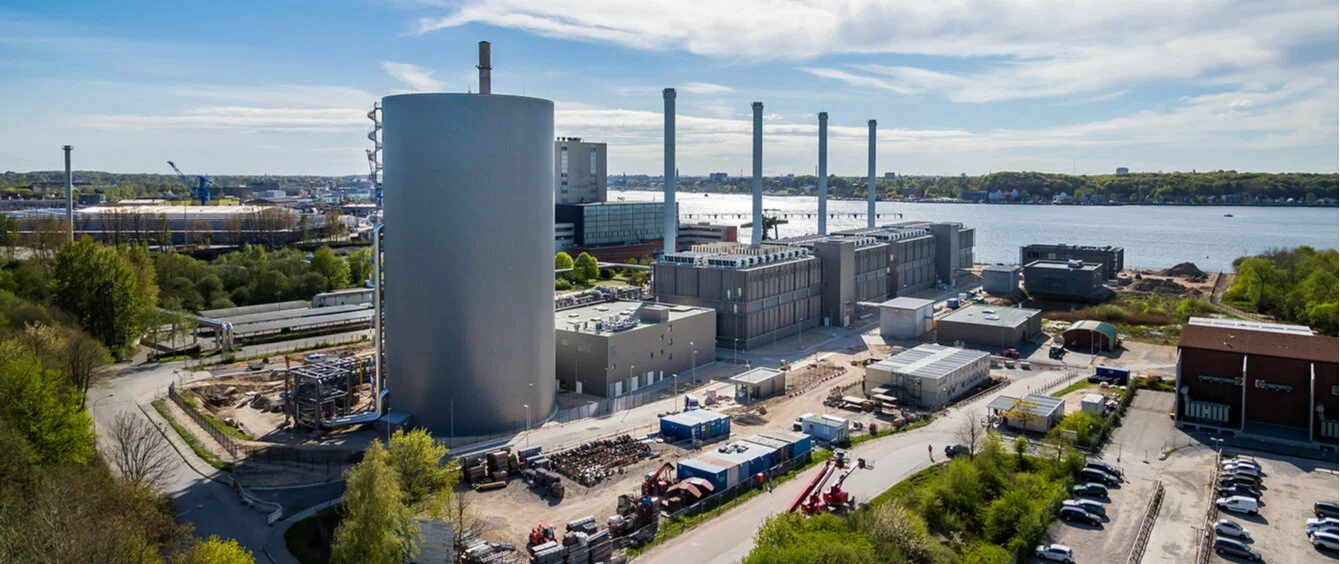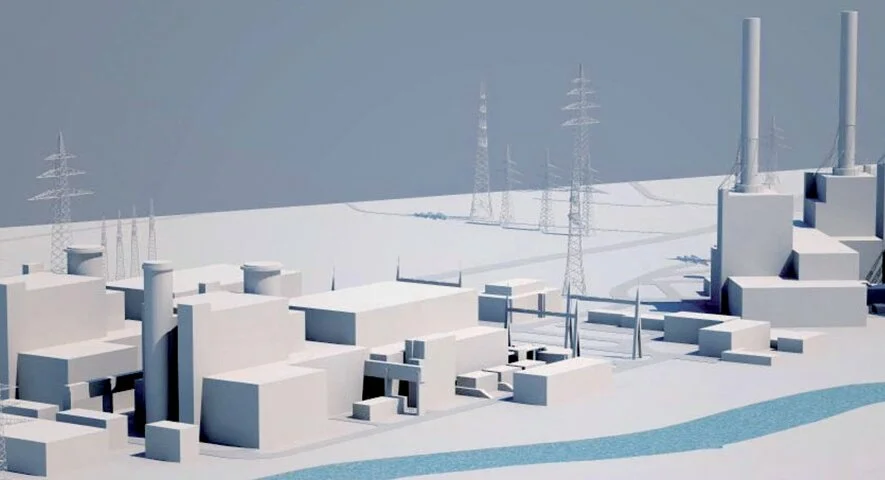Stefan Kapferer hit the nail on the head in just a few words. “We have to build, build, and build even more”, says the 53-year-old in view of Germany’s steadily decreasing power generation capacities. According to the outgoing managing director of the German Association of Energy and Water Industries (BDEW), the end of nuclear energy and the gradual exit from coal-fired power generation will see conventional power station capacity in Germany fall by about a quarter by 2022.
No more installed capacity by the end of 2022
Calculation of the BDEWS on the basis of the final report of the Commission "Growth, Structural Change and Employment". (Source: BDEW)The BDEW power plant list currently numbers 35 new gas-fired construction projects with a total capacity of almost 10,000 megawatts (MW). And yet at the end of the first quarter of 2019, only four of these were under construction – with a capacity of barely more than 600 MW. “What is set to hit the market is not nearly enough,” Kapferer emphasises. Over the past few months, he has repeatedly warned that Germany is walking “right into a secure power deficit – and that by 2023 at the latest”. Nevertheless, little has been done to change this.
New construction projects for gas-fired power plants in Germany
Number of projects by status (Source: BDEW)Has the drop in generation capacity set the course for a capacity deficit?
As long as wind and solar farms in Germany are able to use just one-fifth of their generation capacity – which according to the German Network Agency amounted to nearly 100,000 MW at the end of 2017 – they can cover German power consumption. However, when a typical ‘Siberian high’ heads east, bringing icy cold weather and wind lulls to Central Europe, solar and wind power generation figures spiral once the sun sets.
For now, conventional stations can still be used to feed in the required power and even help to supply neighbouring countries. “But if we end up with a system which is based exclusively on renewables and existing gas-fired power plants and there is no movement on the security of supply front, we will need help from abroad,” says RWE CFO Markus Krebber to Tagesspiegel Background. But power imports, according to Krebber, can’t be a long-term solution for Germany.
How reliable are power imports?
Germany would no doubt benefit from its central location in Europe if this situation were to arise, as it could theoretically source electricity from various neighbouring countries. However, extreme temperatures and weather conditions which are deemed unfavourable for renewable energy do not normally affect just one country, but several nations at a time. As such, BDEW employee Kapferer stressed back in mid-2018: “We can’t rely on the option of being able to import a considerable amount of electricity from neighbouring countries during these periods.” And this would be particularly problematic at a time when almost all other European countries (in German)are decommissioning secure electricity generation capacities.
Kapferer emphasises that if Germany wants to have a successful energy transition, it will have to start increasing its controllable low-carbon generation capacity much faster than before. As it currently stands, the necessary facilities are first and foremost highly efficient gas-fired power plants, featuring combined heat and power (CHP) technology, and combined-cycle gas turbine (CCGT) plants, which combine gas turbines with steam turbines in order to generate electricity.
How big is the gap?
Germany currently operates a gas-fired power station fleet with a total installed capacity of almost 30 gigawatts, i.e. 30,000 MW. By comparison, lignite and hard coal-fired power plants together account for about 45,000 MW whilst nuclear makes up 9,500 MW. Gas-fired power stations could actually supply much more than the 12.8 percent share that the electricity mix would suggest. In fact, they alone could account for almost half of German consumption on average (2018: 61,900 MW). Yet, in order to cover peak demand, at times when renewables don’t or barely contribute to the mix this is by no means sufficient.
If one were to take biomass and hydropower into account, bearing in mind that they can be rendered redundant during cold periods – Germany, counting natural gas, would have a production capacity of around 40,000 MW that could be controlled independently of the weather. This does not even consider half of the peak load expected by the German Network Agency. Without additional power plants, demand for imports could therefore even exceed 40,000 MW in extreme cases. As a comparison: this is about five times what Germany – Europe’s largest electricity exporter – delivered to all its neighbours on average in 2018.
If one were to take biomass and hydropower into account, bearing in mind that they can be rendered redundant during cold periods – Germany, counting natural gas, would have a production capacity of around 40,000 MW that could be controlled independently of the weather. This does not even consider half of the peak load expected by the German Network Agency. Without additional power plants, demand for imports could therefore even exceed 40,000 MW in extreme cases. As a comparison: this is about five times what Germany – Europe’s largest electricity exporter – delivered to all its neighbours on average in 2018.
New-builds are stalling as applications for shut-downs pile up
As such, the urgency of increasing weather-independent generation capacity is obvious. However, under the current market conditions, many gas-fired power plants are hardly profitable enough to operate. According to the German Network Agency, twelve gas-fired stations with a total capacity of 3,000 MW were legally prevented from being decommissioned in mid-2018. This means that the operators wanted to shut them down for economic reasons, but were not allowed to do so because the transmission system operator and the German Network Agency considered them to be critical to the system.
The reason for this is that natural gas is simply too expensive in comparison to coal – and that despite the fact that the efficiency of gas-fired power plants is sometimes twice as high as that of some coal-fired stations. The rising price of EU emission certificates may be playing into the hands of gas power providers as coal-fired electricity becomes more expensive in comparison, but there is still a long way to go before the prices of gas-fired power plants can compete with the most efficient coal-fired stations. According to calculations by the London think tank Carbon Tracker, today’s ETS price would have to rise by 25 to 55 euros for that to be the case.
For RWE CFO Krebber, it is therefore clear that policymakers must create a different investment environment if natural gas is to replace coal as an energy source in the medium term. Without an appropriate market design, according to Krebber, the energy industry would not invest sufficiently in gas-fired power plants.
A first step could be to extend the CHP subsidies to 2030, which would otherwise expire in 2022. A capacity market where, for example, France and Great Britain pay for the provision of capacity regardless of the amount produced, has been the subject of controversy in Germany for years now. As of yet there is no political incentive for this step to be taken.

